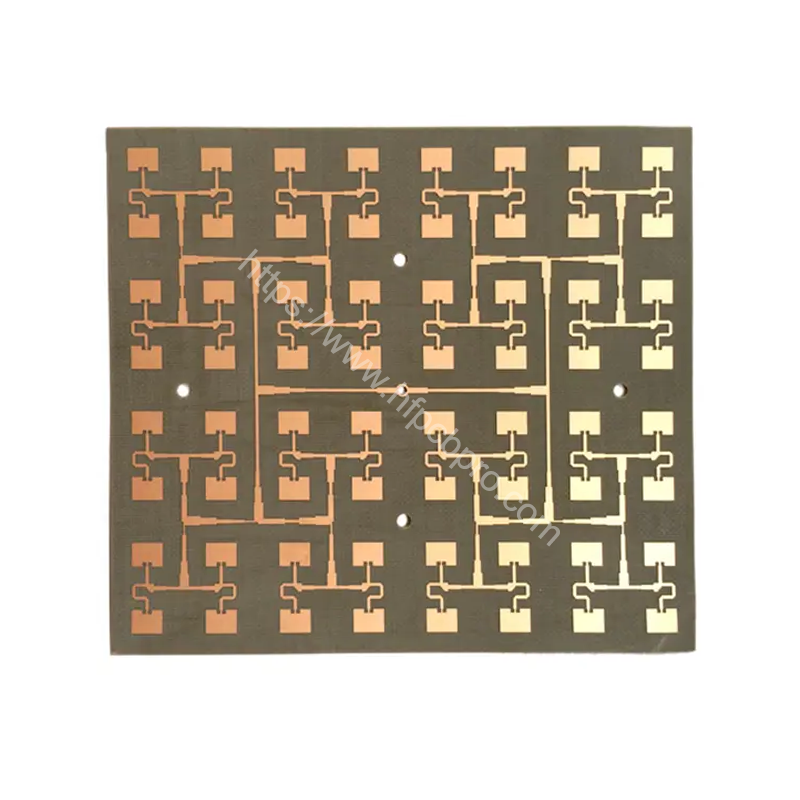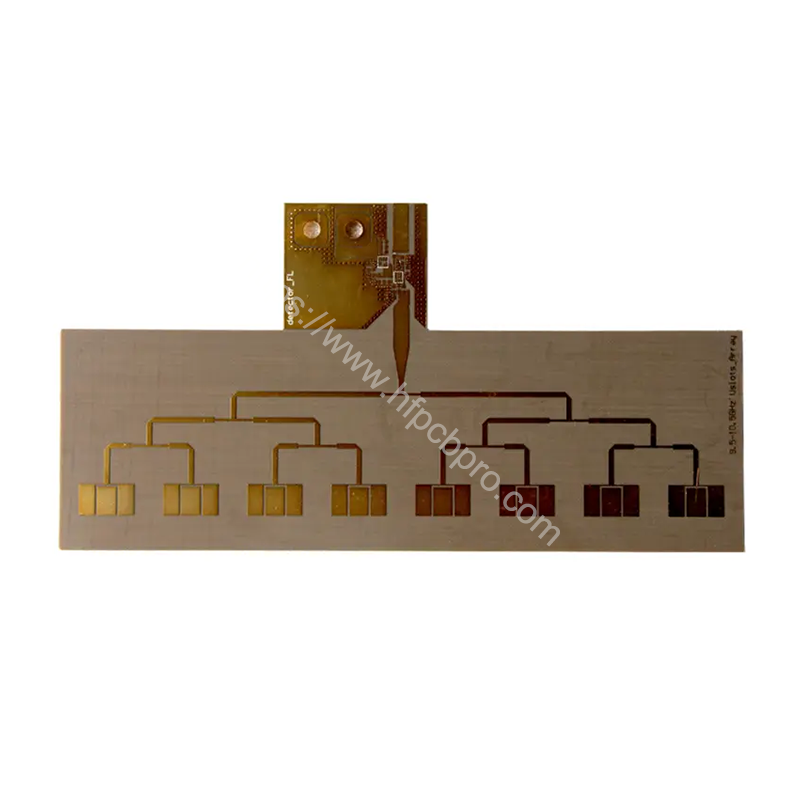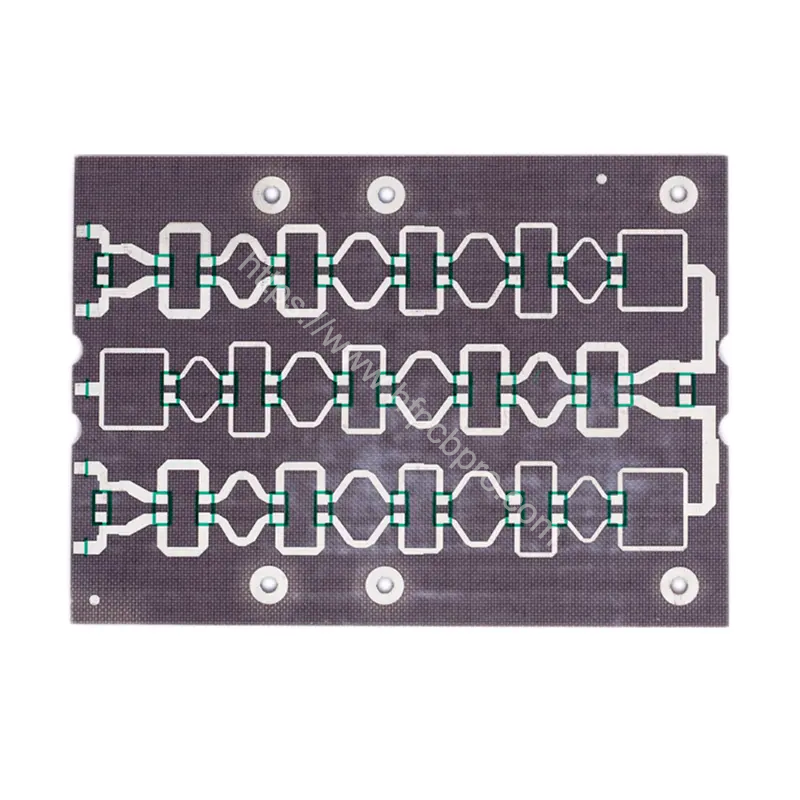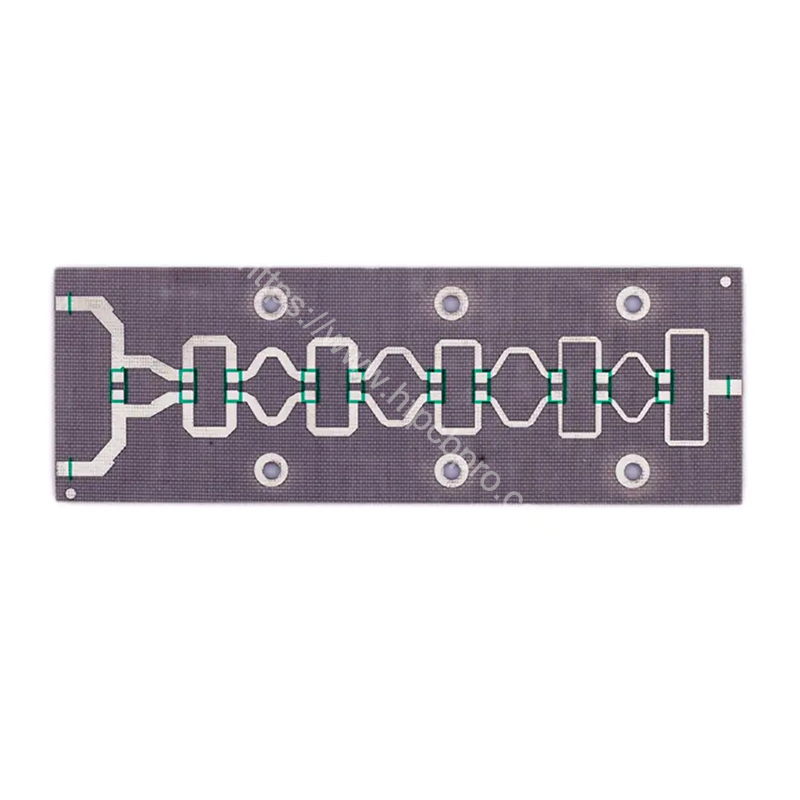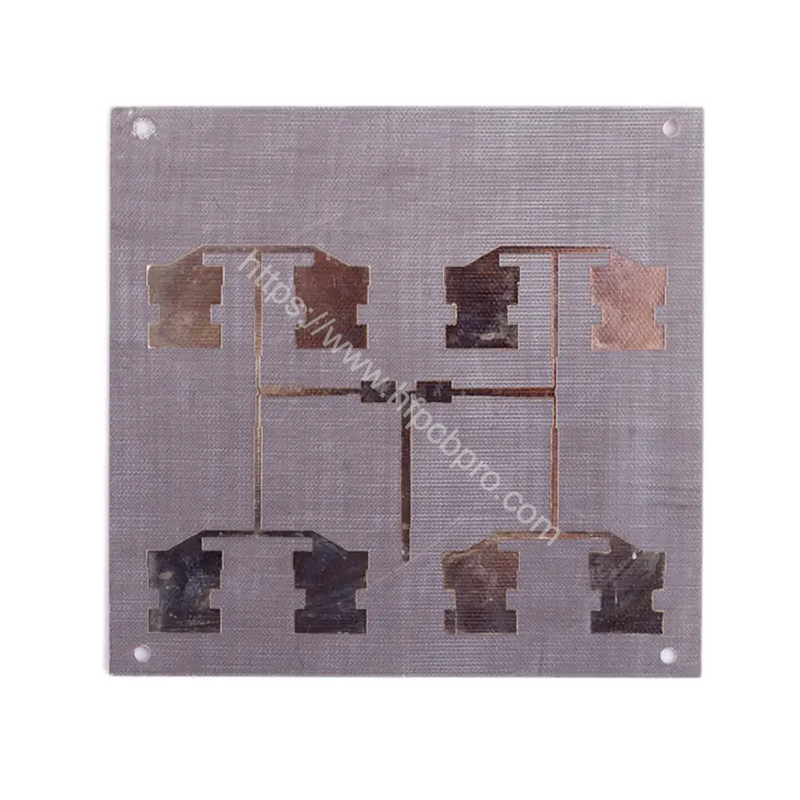This 2-layer PCB uses Taconic TLX-7 material and features a 0.79mm thickness. Ideal for telecommunication devices, it meets IPC6012 Class 3 and IPC-A-600G Class 3 standards, offering excellent signal integrity with a low dissipation factor of 0.0021
| Number of layers | 2L |
|---|---|
| Material | Taconic TLX-7 |
| Board Thickness | 0.79mm(31mil) |
| Copper Thickness | 1/1oz(35um) |
| Quanlity Standard | IPC-Ⅱ |
| Dielectric Constant (Dk) | 2.6 @10GHz |
| Dissipation Factor (Df) | 0.0021 @10GHz |
| Applications | Telecommunication devices |
| Surface Finish | ENIG 2u |
Product Overview
This 2-layer PCB is constructed using Taconic TLY-7 material, specifically designed for high-performance telecommunication devices. The board thickness is 0.79mm (31 mil), offering a robust structure for high-frequency applications. With a low dissipation factor (Df of 0.0021) and a dielectric constant (Dk of 2.6) at 10GHz, this PCB ensures minimal signal loss and superior electrical performance, making it ideal for telecommunication devices.
Product Specifications
Layers: 2 layers
Material: Taconic TLX-7
Board Thickness: 0.79mm (31 mil)
Copper Thickness: 1 oz/1oz (35 µm)
Quality Standard: IPC-Ⅱ
Dielectric Constant (Dk): 2.6 @ 10GHz
Dissipation Factor (Df): 0.0021 @ 10GHz
Applications: Telecommunication Devices
Manufacturing Process
This PCB is manufactured with precision to ensure a stable and reliable connection between all layers. Taconic TLX-7 material is chosen for its low dissipation factor (Df 0.0021) and low dielectric constant (Dk 2.6), which ensures the PCB can effectively handle high-frequency signals with minimal loss. The 0.79mm thickness and 1 oz/1oz copper thickness enhance the board’s durability and conductivity, allowing it to support telecommunication devices requiring high-speed data transmission.
Design Considerations
When designing this high-frequency PCB, it is crucial to focus on signal integrity and low loss characteristics. The low Df value of 0.0021 ensures that the PCB performs exceptionally well in high-frequency environments, making it ideal for telecommunication devices where minimal signal degradation is critical. The 2-layer configuration provides a complex but reliable design that ensures optimal electrical performance.
Applications
This PCB is perfectly suited for telecommunication devices, including mobile communication systems, routers, wireless transmitters, and other high-frequency applications. Its robust construction, combined with Taconic TLX-7 excellent dielectric properties, ensures optimal signal transmission and low loss. With its 2-layer design, the PCB is capable of handling complex circuits and demanding telecommunication requirements.
Manufacturing Process and Quality Standards
The PCB manufacturing process follows stringent IPC-Ⅱ standards, ensuring that the product is reliable and suitable for use in telecommunication systems where high performance and durability are crucial. The low dissipation factor and high dielectric constant allow this PCB to handle high-frequency signals with minimal interference, making it an excellent choice for 5G and other advanced telecommunication technologies.
We offer a variety of high-frequency materials, including Rogers (e.g., RO4350B, RO5880), Taconic, and PTFE, depending on customer requirements.
Absolutely, we can provide detailed datasheets for review.
Our high-frequency PCBs can support frequencies up to 110 GHz, depending on the design and materials used.
We ensure precise impedance control through accurate stackup design, detailed impedance simulations, and advanced manufacturing processes.
Yes, we can combine materials like FR4 and high-frequency laminates for hybrid PCBs.
Restrictions mainly involve minimum trace width/spacing and material selection, depending on your design requirements.
We enhance thermal performance by using high thermal conductivity materials (e.g., metal-based PCBs) and optimizing copper thickness.
Thermal conductivity ranges from 0.2 W/m·K to 1.0 W/m·K, depending on the material.
ENIG/Gold Plating/Immersion Silver/Silver Plating/HASL/Gold finger/OSP/Nickel-palladium Gold/Resin plugging/Countersinking/ENIG+Hard Gold Plating/ImNi+ImTin/ENIG+OSP
ENIG is recommended due to its flat surface and excellent conductivity for high-frequency use.
We can produce high-frequency PCBs with layers ranging from 2 to 72.
Yes, we specialize in multilayer high-frequency PCBs and support hybrid stackup processes.
The thickness tolerance is ±0.05 mm, and the trace width tolerance is ±10%.
We perform impedance testing, RF performance testing, vacuum thermal testing, and more.
We achieve this by using high-quality materials, optimized manufacturing processes, and strict control of board thickness and other parameters.
Answer: Prototypes typically take 2–7 business days, while mass production takes 6–15 business days, depending on order volume and complexity.
High-frequency materials (e.g., Rogers) are more expensive, and higher layer counts increase complexity and cost.
We ensure reliability by using high-quality materials, rigorous testing, and optimized manufacturing processes.
Yes, our PCBs can endure temperatures up to 260°C and are suitable for harsh environments.
We use anti-static bags, vacuum packaging, and shockproof padding in the outer cartons for protection.
We provide air freight, express delivery, and sea shipping, depending on your needs, DHL is always prefered that ensure timely delivery through reliable logistics.
